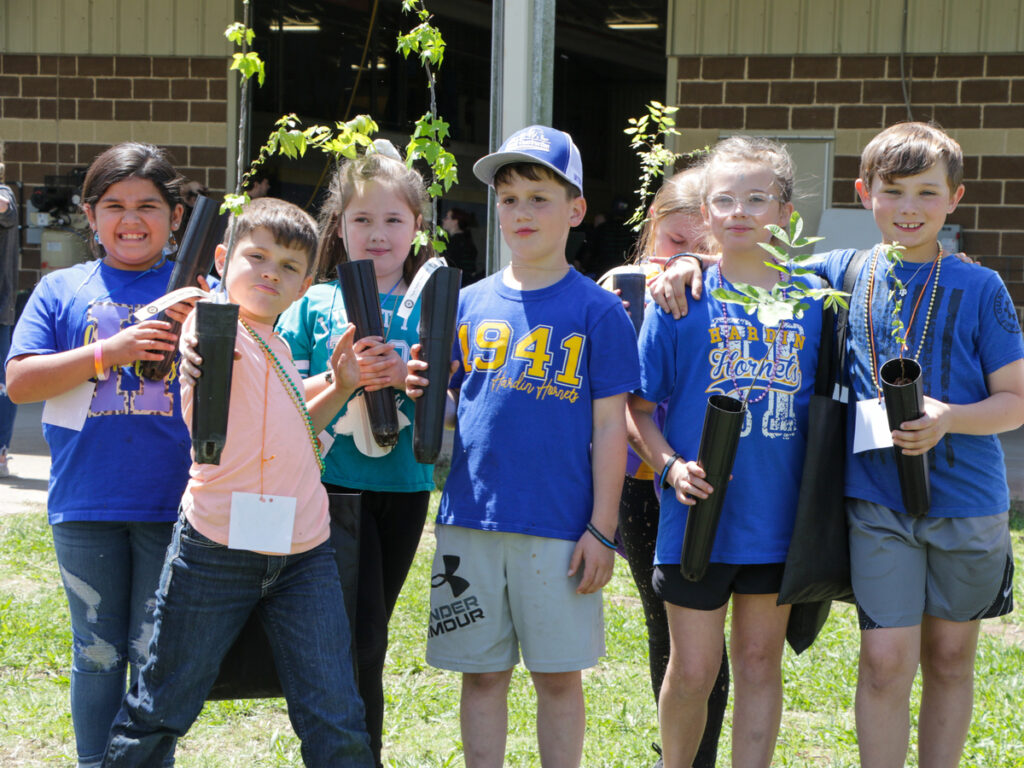Explore nature with young learners
Early childhood activities offer hands-on, play-based experiences designed to inspire curiosity and foster development in young children. From sensory play to storytelling and outdoor exploration, these activities strengthen cognitive, motor, social, and emotional skills while building a connection to the natural world that your little ones will carry with them as they grow.
A healthy respect and love for our environment starts in early years during critical brain development windows that occur from birth to seven years of age. This respect and personal relationship with nature is an essential factor in determining environmental attitudes and behaviors through youth and adulthood.
Types of early childhood nature activities
It’s important to support your child’s early development in the following areas. Including nature—both indoors and outdoors—provides opportunities for children to engage with others, build relationships, and grow their confidence while learning to navigate the world around them.
- Physical development
Activities like outdoor play and movement, nature walks, and building with natural materials enhance both gross and fine motor skills.- Activity example: Children can build structures with sticks, climb over natural obstacles, or engage in gardening activities, which combine physical activity with exposure to the natural environment.
- Cognitive development
Activities such as puzzles, sensory games, and simple science experiments encourage critical thinking and curiosity about the environment.- Activity example: Observing how plants grow, examining tree bark or leaves, and identifying wildlife introduce children to cause-and-effect relationships and problem-solving through hands-on exploration.
- Language and literacy development
Storytelling, reading, singing, and interactive discussions with nature-based themes help children improve communication and language skills while fostering a connection to trees and forests.- Activity example: Reading books about the life of a tree or discussing seasonal changes during a walk can help children link language with their observations of the natural world.
- Creative arts
Arts, music, drama, and imaginative play foster creativity and self-expression while incorporating elements of nature.- Activity example: Children can create art using leaves, flowers, and other natural materials or act out forest-themed scenarios, such as pretending to be forest animals or explorers.
- Social and emotional development
Nature-rich environments provide calm, low-stimulation settings that encourage emotional regulation, engagement, and confidence-building. In these environments, young learners are better equipped to navigate new social dynamics and interact cooperatively.- Activity example: Children can work together to plant a garden or practice simple sensory check-ins and mindfulness activities.
Curriculum and lessons
Project Learning Tree: Trees & Me
Discover Project Learning Tree’s early childhood curriculum guide, Trees & Me, designed to inspire children ages 1-6 to connect with nature through fun, hands-on activities. From outdoor exploration to creative arts and storytelling, this guide helps caregivers and educators nurture curiosity and foster a lifelong appreciation for trees and forests.
Healthy Trees, Healthy Me
Explore the Healthy Trees, Healthy Me early childhood curriculum, designed to help young children develop a deeper connection to nature and understand the important role trees play in keeping us healthy. Through engaging, hands-on activities, children will learn how trees contribute to clean air, shade, food, and overall well-being. The curriculum provides resources for parents, caregivers, and educators to guide children ages 3-6 in developing empathy for the natural world, building healthy habits, and fostering a sense of responsibility for protecting our environment.
Other ways to get started
- Take them outdoors
Organize nature walks and scavenger hunts or let children explore textures like tree bark and leaves.
Example: Color, shape, and texture scavenger hunts, such as finding round stones, green leaves, or something soft.
- Hands-on creativity
Try leaf rubbings, bark impressions, or tree art using natural materials.
Example: Little child using autumn leaves, acorns, and pinecones for crafts.
- Stories and books
Read books and share stories about trees and forests to spark imagination. Check out our recommended reading list.
- Plant something together
Engage children in planting trees or gardens to teach care and responsibility through our tree planting guide coloring page.
- Embrace the weather
In Texas, there’s no such thing as bad weather. Just unprepared people. Interacting with different weather provides unique connection experiences, inspires joy and wonder, and helps us be more in-tune with our environment. Dressed accordingly, young children are encouraged to explore the rain.
- Seasonal fun
Collect leaves in fall, observe buds in spring, or enjoy the shade of a tree in summer. These activities help children understand and develop early STEM skills, like noticing the changing seasons and the cycles of nature.
- Community events
Join local tree-planting days or nature clean-ups to teach teamwork and stewardship.
Example: Participate in Texas Arbor Day events for opportunities to connect with your community and connect knowledge to action at a young age.
- Creative play
Set up a dramatic play station at home or in your classroom that encourages pretend play with forest or with forest products. Use costumes or simple props to help little ones learn about different careers in green jobs, like a forester or forest ranger, forest scientist, or wildland firefighter.
